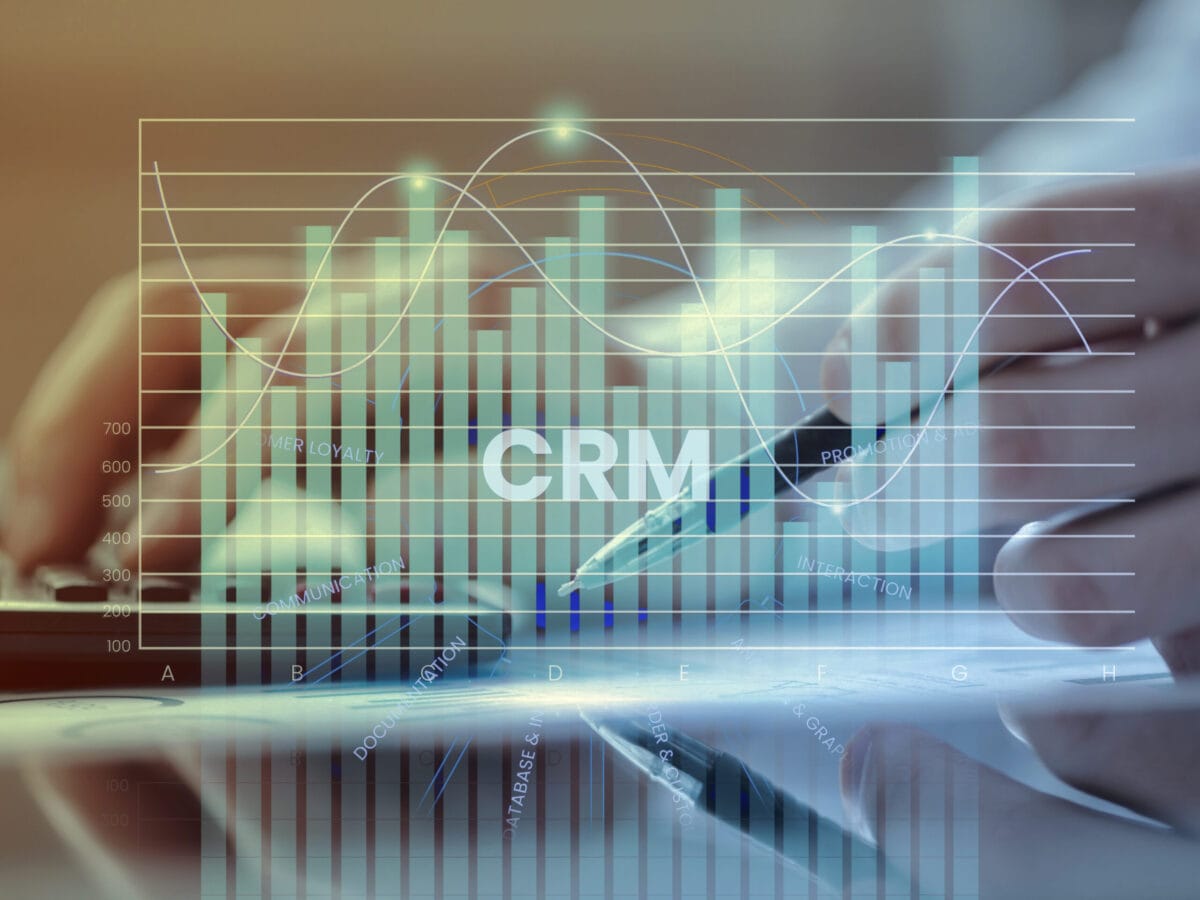Introduction: Why Budgeting Matters in CRM Migration
Migrating to a new CRM (Customer Relationship Management) system is a significant step for any organization. It can open doors to greater efficiency, smarter workflows, and improved customer engagement. This transformation, while challenging, holds the promise of significant benefits for your business.
A CRM migration involves transferring existing data, workflows, users, and integrations into a new platform. If executed correctly, the transition can deliver massive ROI. If poorly planned, it can drain resources, leading to cost overruns and disruptions in daily operations.
The most common reason CRM migrations fail isn’t the technology, it’s poor budgeting and planning. Many organizations underestimate the true costs because they don’t have a clear CRM migration Hidden Cost. This can lead to significant financial losses, project delays, and disruptions in daily operations.
This guide will walk you through every aspect of CRM migration costs, from licensing and data transfer to hidden expenses and planning strategies. By the end, you’ll have a detailed roadmap to budget effectively and migrate without financial surprises in 2026, giving you a sense of security and control over the process.
Why Do Businesses Migrate to a New CRM?
Before breaking down the costs, it’s essential to understand why businesses migrate in the first place. Knowing the reasons can also help justify the budget to stakeholders.
Standard Drivers of CRM Migration:
- Outdated Technology: Legacy systems may not support AI tools, mobile apps, or modern integrations.
- Scalability Needs: Growing businesses require a CRM to handle larger datasets and more users.
- Better Integrations: Modern CRMs like Microsoft CRM offer seamless integrations with ERP, finance, and marketing systems.
- User Experience: A confusing interface often leads to low adoption rates.
- Cost Savings: Newer CRMs may provide better value with bundled features or flexible subscription models.
When the benefits outweigh the risks, migration becomes not just necessary but a strategic advantage. A well-planned migration can lead to significant cost savings, giving you confidence in your decision.

What Impacts CRM Migration Costs?
Not all CRM migrations cost the same. Several variables determine the final price tag. Let’s break them down:
1. Data Volume and Complexity
The size and quality of your data heavily impact cost. Clean, structured data is easier and cheaper to migrate. Messy data filled with duplicates, errors, or outdated records requires data cleansing, which adds time and expense.
2. Number of Users and Licenses
Each user requires a license in the new CRM. Adding more users increases subscription costs, onboarding requirements, and configuration needs. For many businesses, license fees form the most significant part of their CRM budget.
3. Customizations and Workflows
No two businesses are alike. Expect higher costs if your company relies on custom workflows, dashboards, or modules. Connecting CRMs to third-party applications like ERP or marketing automation tools adds additional layers of complexity.
4. Migration Timeline
Tight deadlines usually require more workforce or specialized tools, driving costs up. A phased approach may spread costs over time but still requires careful coordination.
5. Vendor Expertise and Tools
Partnering with experienced migration experts costs more upfront but reduces the risk of errors. AI-driven mapping and duplicate detection tools can also increase efficiency, but add subscription costs.
CRM Migration Hidden Cost: 2026 Pricing Guide
Here’s a detailed look at the cost components you should budget for in 2026.
| Category | What It Covers | Typical Cost Range (2026) |
| Licensing & Subscriptions | CRM platform licenses, user seats, annual fees | $15–$150 per user/month (vendor dependent) |
| Data Migration | Record transfers, attachments, cleansing, and mapping | $1,000–$10,000+ or $0.01–$0.05 per record |
| Implementation & Setup | Configurations, custom fields, workflows, and role setups | $5,000–$25,000 (SMBs); higher for enterprises |
| Integrations | ERP, finance, marketing, and support tool connections | $3,000–$15,000+ depending on scope |
| Training & Support | Onboarding, workshops, helpdesk, and ongoing administration | $1,500–$10,000+ depending on duration |
Key Insight
While smaller businesses may complete migration for under $15,000, larger enterprises can easily exceed $100,000 once heavy integrations and custom workflows are included.

Hidden Costs of CRM Migration
Even with a clear breakdown, many businesses underestimate costs due to overlooked factors. Here are the most common hidden expenses:
- Data Cleansing: Time and tools required to standardize and validate data.
- Downtime: Productivity losses when systems are offline during migration.
- Temporary Tools: Middleware or third-party connectors used temporarily.
- Training Gaps: Users may need extra training sessions to reach full adoption.
- Post-Migration Issues: Bugs, missing fields, or misconfigurations discovered after go-live.
By acknowledging these risks upfront, businesses can add contingency funds to their migration budget.
CRM Migration Planning: How to Stay on Budget
To avoid surprise costs, you need a structured plan. Follow these steps:
1. Define Scope and Objectives
Clarify which data, users, and processes will be migrated. Decide whether customizations are essential or “nice to have.”
2. Audit Data Quality
Conduct a data audit before migration begins. Removing duplicates and outdated records reduces both cost and time.
3. Choose Migration Approach
- Big-Bang Migration: Move everything at once. Faster but riskier.
- Phased Migration: Roll out in stages, minimizing disruption but requiring more coordination.
4. Involve Key Stakeholders
Migration is not just an IT project. Involve sales, marketing, customer support, and finance teams to ensure workflows meet business needs.
5. Test Before Go-Live
Run sandbox or pilot migrations to identify potential issues. Testing prevents expensive errors during the final rollout.
CRM Migration Trends in 2026
The CRM landscape is evolving rapidly. Here are the trends shaping costs and strategies in 2026:
- Bundled Packages: Vendors like Microsoft CRM offer subscriptions that include setup and support, simplifying budgeting.
- AI and Automation: AI is increasingly used for duplicate detection, predictive cost modeling, and automated data mapping.
- Self-Service Tools: Some platforms provide DIY migration kits, reducing reliance on external consultants.
- Cloud-First Migrations: On-premises systems are being phased out, making cloud-to-cloud migrations faster and cheaper.
These trends highlight why 2026 migrations may be more cost-effective than ever—if planned properly.
How Microsoft CRM Helps Control Migration Costs
Microsoft CRM has become one of the most trusted platforms for businesses worldwide. Here’s why it stands out in terms of cost control:
- Transparent Pricing: Microsoft provides clear license models with no hidden fees.
- AI-Powered Tools: Built-in AI helps with data mapping, cleansing, and workflow automation.
- Integration Ecosystem: Seamless connections with Office 365, Power BI, Teams, and ERP reduce the need for third-party tools.
- Scalability: Businesses can start small and expand as they grow, avoiding over investment.
- Support Network: A global network of certified partners ensures expert help at every stage.
Organizations can choose Microsoft CRM to align migration budgets with long-term business goals.

Final Thoughts
Budgeting for CRM migration is not about predicting exact numbers—it’s about understanding all the possible costs and planning for them. A clear CRM migration Hidden Cost prevents overspending, protects against hidden fees, and ensures a smoother transition.
As businesses head into 2026, more innovative tools and transparent pricing models make migrations more predictable. Choosing a platform like Microsoft CRM provides cost control and the scalability and innovation needed for long-term success.
With the proper preparation, your migration can be a strategic investment that boosts efficiency, empowers teams, and strengthens customer relationships.
FAQs About CRM Migration Costs
1. How much does CRM migration usually cost in 2026?
CRM migration costs vary, but most businesses spend $10K–$50K. Small teams pay less, while complex enterprise projects with heavy integrations may exceed $100K.
2. What factors influence CRM migration, Hidden Cost?
The main cost drivers are data volume, number of users, license fees, integrations, customizations, and vendor expertise. Each factor impacts complexity and pricing.
3. Are there hidden costs in CRM migration?
Common hidden costs include data cleansing, downtime, training gaps, middleware, and post-migration troubleshooting. Budgeting for these prevents financial surprises.
4. How long does a CRM migration project usually take?
A typical CRM migration takes 8–12 weeks. However, projects with millions of records, advanced integrations, or complex workflows can extend to 6–12 months.
5. Can small businesses afford CRM migration?
Yes. Small teams often spend under $15K, especially with fewer users and simpler data. Scalable platforms like Microsoft CRM offer flexible plans to control costs.
6. How is CRM data migration pricing calculated?
Pricing depends on data size, record volume, and complexity. Some vendors charge per record, others per GB, while larger projects use flat or tier-based packages.
7. What is the best way to budget for CRM migration?
Set clear goals, audit data quality, define scope early, involve stakeholders, and include contingency funds. Planning prevents overspending and ensures a smooth rollout.
8. Why do CRM migrations fail financially?
Most migrations go over budget due to poor planning, underestimating hidden costs, and lacking training. A detailed CRM migration Hidden Cost reduces these risks.
9. How does Microsoft CRM help control migration costs?
Microsoft CRM offers transparent licensing, built-in AI tools, and scalable features. Its global partner ecosystem ensures smooth migration without hidden expenses.
10. Should I choose a phased migration or a big-bang approach?
Phased migration spreads costs and reduces risk, while a big bang is faster but riskier. The best choice depends on budget, data complexity, and organizational needs.
11. How is CRM data migration pricing calculated?
Pricing models vary: per record, GB, or flat project-based pricing depending on the vendor.
12. How do I choose the right CRM migration partner?
Look for proven expertise, transparent pricing, and strong post-migration support. Microsoft CRM’s global partner ecosystem makes it a reliable choice.


